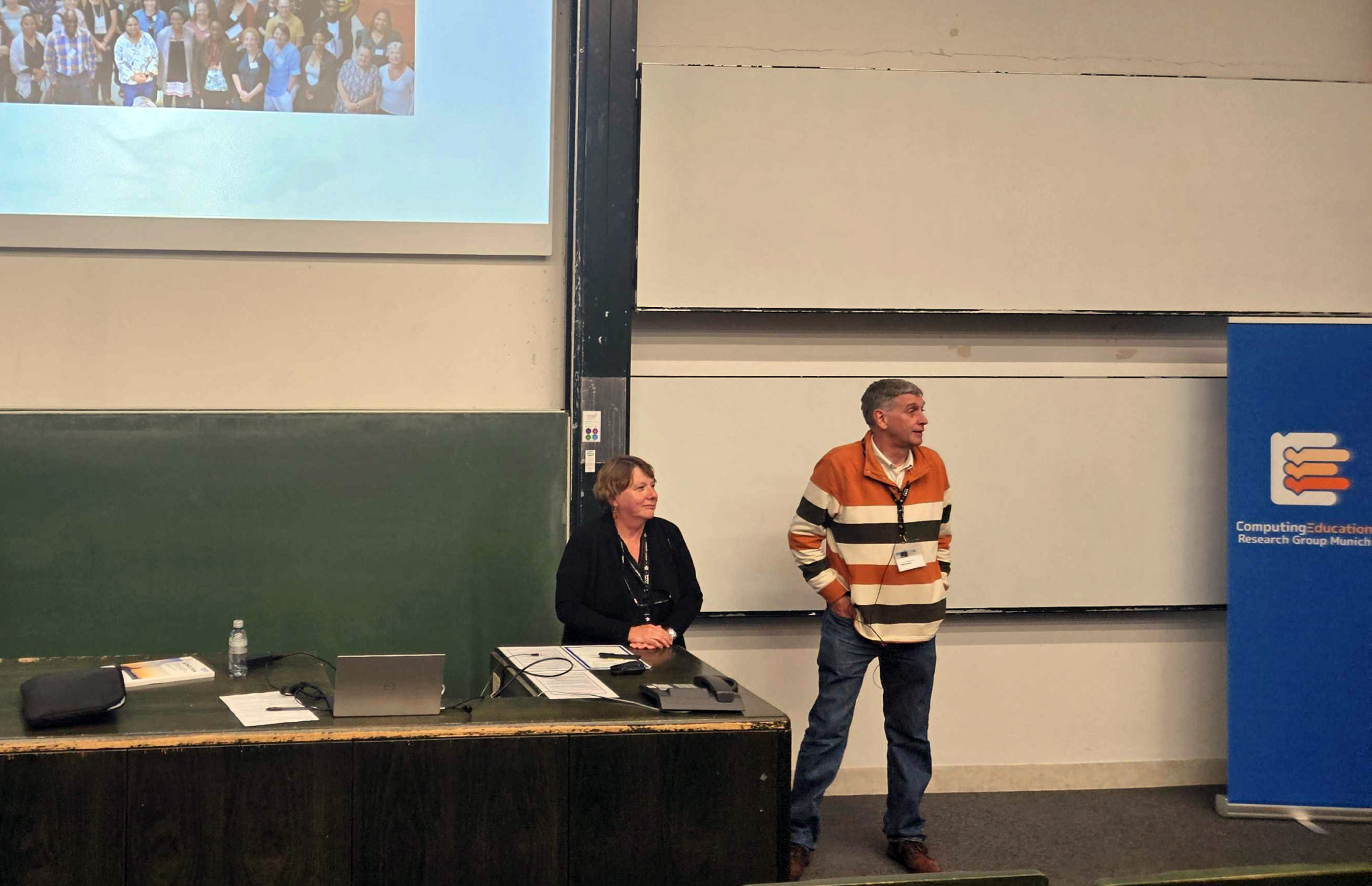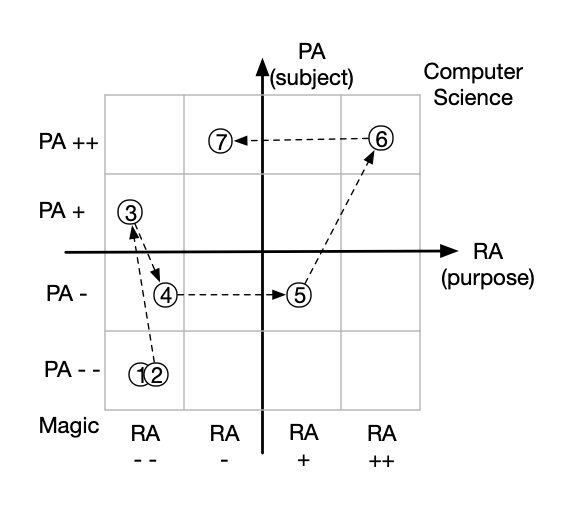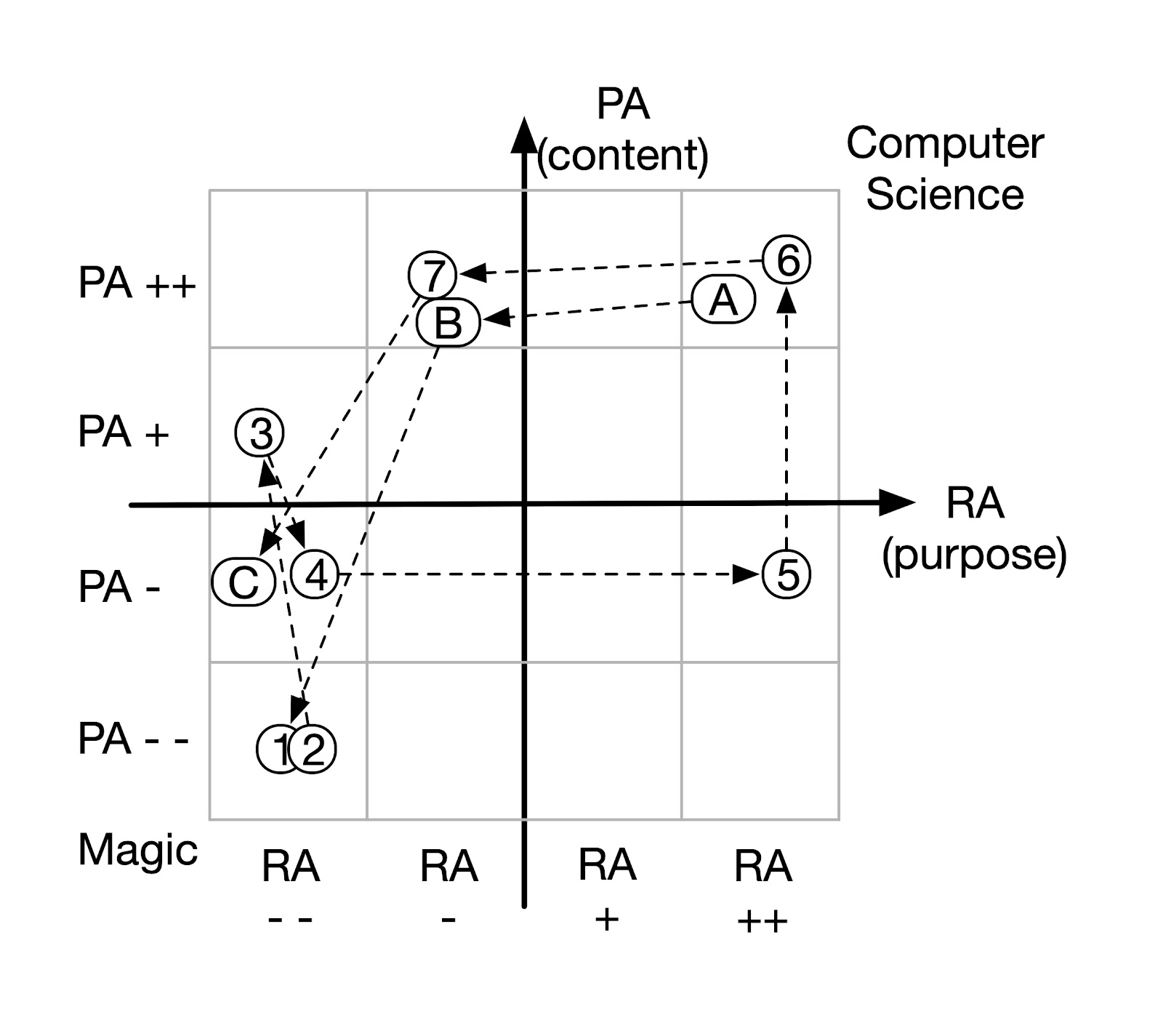Conducting research can be an unpredictable journey, one never knows when an idea will resonate deeply, become a transformative theory, or leave a lasting impact. Over the last ten years, I have been very fortunate to work with Professor Paul Curzon and Professor Karl Maton on a strand of research that I believe has this kind of long-term potential. This work is on bringing Legitimation Code Theory (LCT), a general sociological set of frameworks, to Computer Science education.
Initially, Paul, Karl and I focused on one LCT dimension called Semantics, which has already gained traction in computing education. For example, Ofsted has recommended its principles for computing pedagogy. Recently, we have shifted to a second dimension: Autonomy. While still in its early stages, Autonomy could prove equally valuable, perhaps even more so for primary computer science education research!
Introducing Autonomy: A framework for cross-curricular analysis
In September 2024, I presented with Paul on our first computer science Autonomy research study at the ITiCSE conference in Milan. The research was a case study, exploring and evidencing how to use the Autonomy framework in computing practice. Paul and I did our normal very enthusiastic presentation double act, always a hit with what can be a serious academic audience. The theory was very well received. Several researchers came to us later asking for more details and talking about how they were going to use the theory to analyse their work, or by initial teacher trainers saying they would introduce the framework to their trainee teachers.

But what is Autonomy? At its core, Autonomy is a framework that can be used for analysing when one teaches more than one thing at once. For example, in computer science, we might teach about programming and science, or spreadsheets and maths, or digital media making and art (the list is endless). While these interdisciplinary approaches hold promise, they often fall short, with students failing to grasp one or both subjects effectively. Why is that?
Autonomy gives us a way to analyse these situations. It introduces a structured and formal language to talk about cross-curricular teaching, helping educators to pinpoint areas where things are going wrong. In our case study, we analysed the teaching of algorithms through the teaching of magic, and the results revealed important insights about how to optimise such lessons for better learning outcomes.
How does an Autonomy analysis work?
Autonomy analysis focuses on two key aspects of a learning event:
- Relational Autonomy (RA): The purpose of a teaching step. Why is this step being taught? Is it intended to teach the primary subject or the cross-curricular topic?
- Positional Autonomy (PA): The content of the teaching step. What is being taught at this moment?
In Autonomy analysis, a learning event is broken down into steps and the type of autonomy is determined for each step. Simply put, one analyses why you are teaching that step, and what the content of the step is. For our case study, we first determined whether the purpose of each step was to teach magic or to teach about algorithms (or something else). Secondly, we analysed what was taught in that step, whether the content was focused on the magic trick or computer science content (or something else). Armed with this analysis of the steps, we could then draw a diagram that shows over the course of the lesson the changes in purpose and content (see Figure 1). By breaking a lesson into discrete steps and analysing each one through these lenses, educators can visualise the shifts in purpose and content over the course of the lesson. The analysis can then be visualised in a diagram that maps these changes or pathways, offering insights into its effectiveness.
Types of pathways: Tours vs. One-Way Trips
Autonomy diagrams can show two different types of pathways (see Figure 1):
- A one-way trip that takes you from one quadrant on the diagram to another and does not return, potentially leaving key concepts underdeveloped.
- A tour (like a holiday destination tourist’s tour) that starts and ends in the same conceptual place. Research from other disciplines suggests that tours are more likely to result in successful learning experiences.

We found that our case study lesson was initially a one-way trip (Figure 2). This meant students started with magic and ended with algorithms without fully integrating the two subjects. To improve the lesson, we added extra steps, to make it into a tour (Figure 3). While this adjustment shows promise, further empirical studies are needed to evidence the effects of our changes.


Why does the Autonomy framework matter?
Teaching computing is widely regarded as challenging, especially in cross-curricular contexts. Lessons that aim to teach computer science through and with another topic have been found to often be unsuccessful. Maybe spending time to think deeply about what is going on in these lessons, using Autonomy analysis, may help reveal what is going on and put us in a better position to improve these lessons.
Our journey with Autonomy is just beginning, but we believe that it holds incredible potential for improving cross-curricular teaching in computer science and beyond. If you want to find out more about Autonomy, please read our paper, or you can read about the theory on the LCT website.